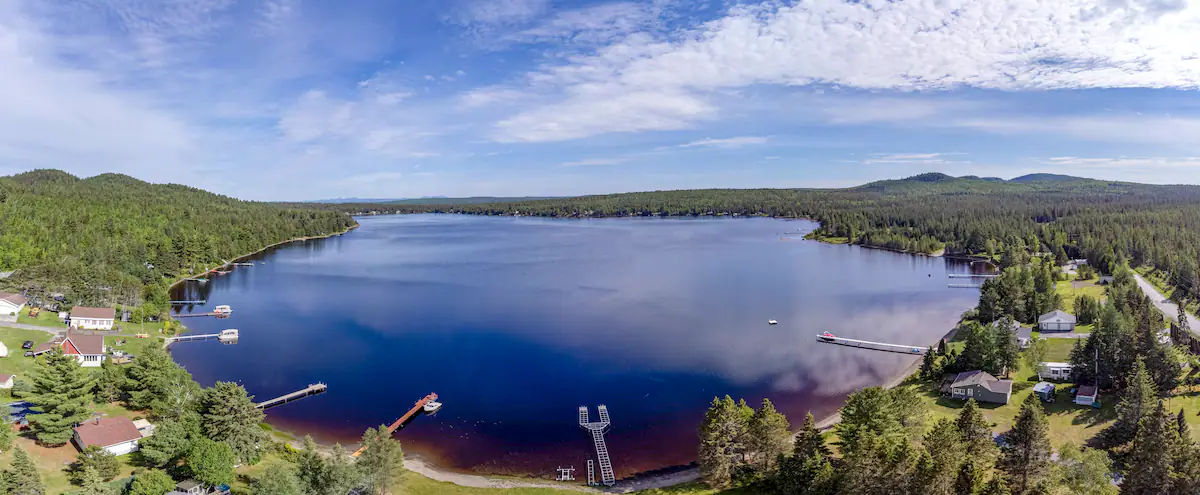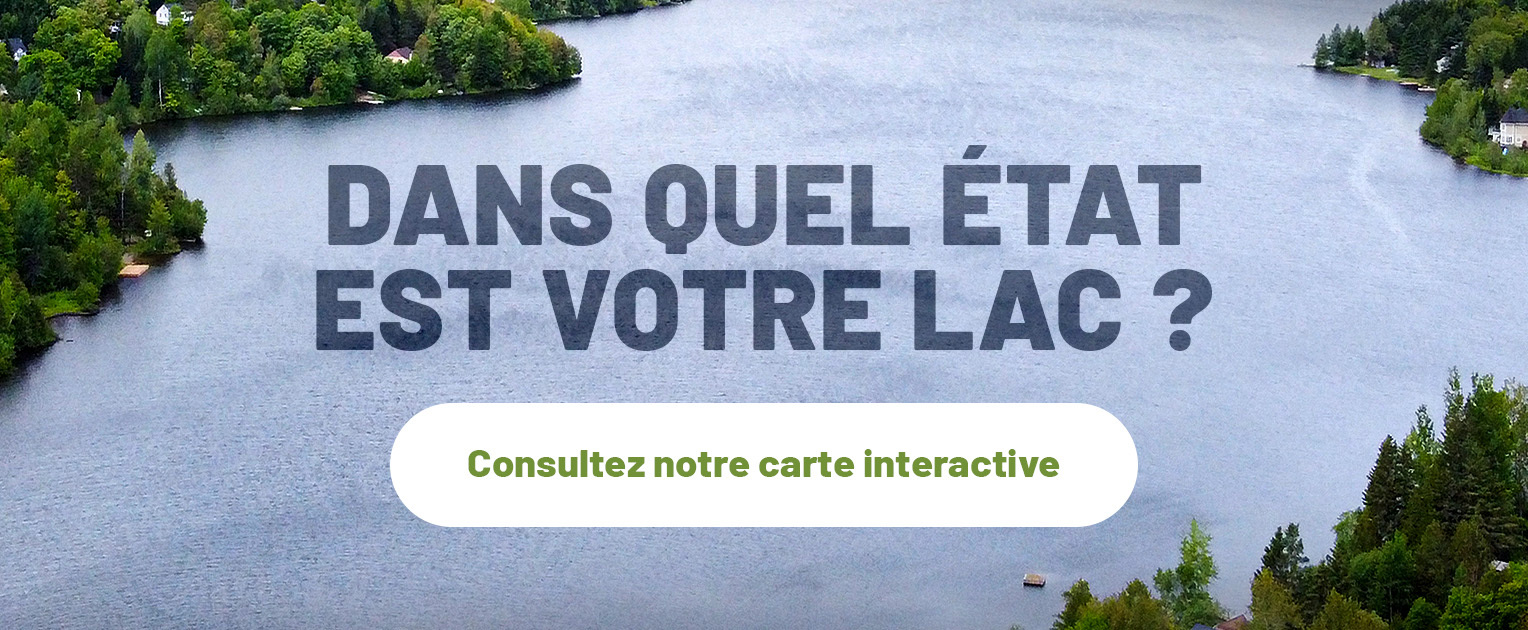Owners have seen their residence lose up to 25% of its value because it is located around a lake in very poor health.
No swimming, hard-to-sell residences, court battles, loss of revenue for cities; blue-green algae (cyanobacteria) or invasive alien plants like Eurasian watermilfoil not only poison water quality. They also poison the lives of local residents.
For the time being, the pandemic has caused a spike in cottage prices. But some may have bad surprises in a few years.
“The market has been so crazy since the pandemic, people are ready to go above and beyond to have a property near a lake. But in a normal market [la présence de myriophylle ou de cyanobactéries] has an impact”, explains David Bourgon, real estate broker specializing in the sale of residences on the edge of the lakes and president of the Estrie, Mauricie, Centre-du-Québec Real Estate Chamber.
Photo Martin Chevalier
Real estate broker David Bourgon believes that buyers should seriously inform themselves about the water quality of a lake before buying a cottage on its shores.
IDLE MARKET
Mélanie Deslongchamps, general manager of the AGIRO organization, which works in the Saint-Charles River watershed in Quebec City, also heard (before the real estate market caught fire) from owners who were having difficulty selling. their residences around Lac Clément.
“When people inquire about the health of the lake, they back out because they say ‘I want to stay on the edge of a lake, but a dead lake, that doesn’t interest me,'” he explains. -she.
And for good reason. The water of Lac Clément has become brackish due to the de-icing salt used on the roads and gives off an unpleasant smell. “Last year there were large thread algae, there are also cyanobacteria and the water is salty to the point that there is toxicity. Everything is a bit sticky, says Ms. Deslongchamps. People who wanted to buy asked me if I would buy there. I can’t say yes, it’s the worst lake in the territory.”
25% DECREASE IN VALUE
In a January 2015 decision, the Administrative Tribunal of Quebec ruled that the presence of cyanobacteria for five out of six years since 2008 in Lac à la Perchaude, in Shawinigan, had “significantly” slowed down the real estate market in the area and caused reduce the value of four properties by 25%.
The owners wanted to lower the assessment of their property.
“From the moment the presence of blue algae was officially known in 2008, there were no transactions until 2011. The evidence also reveals that several properties are for sale and have still not found a buyer”, perhaps we read.
Living near a lake in poor condition also often translates into spending time and money to improve the condition of the lake, because the Department relies heavily on local residents’ associations.
Broker David Bourgon himself bought a property at Lake Lovering, in the Eastern Townships, which is invaded by watermilfoil. A few months after his arrival, the local residents’ association asked him for a financial contribution.
The reputation of their lake destroyed
Photo Martin Chevalier
Lac à la Truite, in Sainte-Agathe-des-Monts, is struggling with a serious problem of Eurasian watermilfoil, an invasive plant. The situation is so problematic that some areas are impossible to navigate, according to ex-MP Russell Copeman.
In 2019, the courts considered the case of dozens of owners of Sainte-Agathe-des-Monts who disputed the property assessment of their property on Lac à la Truite, invaded by Eurasian watermilfoil.
One of the owners testified that the reputation of the lake had been “destroyed since the arrival of this plant and the installation by the municipality, in 2013, of a large poster at the exit of the highway on the dangers of Eurasian watermilfoil. “, can we read in the decision. According to him, this scared away potential buyers.
“About 25% of the lake is almost unswimmable, you can’t sail, because the watermilfoil is so dense that it catches a boat,” explains ex-MP and ex-mayor Russell Copeman, who has a cottage on the lake in a less affected area.
“If the front of my cabin had been overrun with watermilfoil as is the case with other places on the lake, I would not have bought,” he adds.
Photo Martin Chevalier
The City has posted warning signs.
The judges recognized that the invasive plant could cause a loss of desirability of properties and, by extension, a form of depreciation of property values. But they did not consider that the proof had been made for 2014, the reference year for property assessment. The request was therefore dismissed.
LOSS OF REVENUE
“Watermilfoil can cause a loss of between 10 and 20% of the value [d’une résidence]“, said in an interview the appraiser Bertrand Tremblay who had testified in these cases. A 2014 U.S. study of 41 lakes in Washington State estimated the decline at up to 19%, in addition to lost property tax revenue for cities.
Appraisers look at the condition of the body of water to assess the value of your home. “When we do an assessment, we look at government files to see if there is Eurasian watermilfoil in the lake and we enter it in the report,” says Mr. Tremblay. Sometimes lenders don’t want to get into that.”
Banking institutions may tighten their conditions for granting a loan because of “environmental risks” and require environmental studies, or even require a higher down payment.
$7,000 for hiding the blue algae
A couple sued the man who sold them a cottage in 2008 on Lake Maggie in Lac-Saint-Jean for $26,850 because the latter had not told them that cyanobacteria were in the lake.
The chalet was supplied with water by a pump drawn from the lake. The water was not drinkable, but could be used for washing, showers or even brushing teeth, the vendor had assured them. The latter had even praised swimming and fishing.
ROTTEN EGG SMELL
During the summer, the new owners found that the tap water was cloudy and smelled like rotten eggs. Then one day when they were bathing, the neighbor told them that they were “reckless” because of the presence of blue algae. A few months before the sale, the Health and Social Services Agency had even published a warning on this subject and the former owner had then been warned by this neighbor.
IMPROPER
In her decision rendered in 2011, Judge Doris Thibault did not consider that it was a latent defect, nor that the seller had acted in bad faith. She nevertheless acknowledged that the building was not “strictly in accordance with what was agreed” in the sales contract.
“They [Les acheteurs] were entitled to expect to be able to bathe without constraint as well as to be able to benefit from running water twelve months a year, because this is what they were represented”, can we read.
“The general information obligation ensures that the seller is required to disclose any element that may have an objective impact on the buyer’s consent to buy,” explains lawyer Bryan-Eric Lane.
“If we can’t swim in the lake because there is invasive algae and you know about it or if it could affect the value of the property, you have to say so.”
The judge sentenced the seller to pay $7,000 to pay for part of the installation of an artesian well to solve the problem.
A disturbing website
In 2014, a couple tried to shut down a website that exposed the problems of Lac Coulombe, in Saints-Martyrs-Canadiens in Centre-du-Québec, where they owned several lots for sale and cottages for rent. The website, created at the end of 2011, was managed by a neighbor who campaigned for the preservation of the lake and exposed the various threats to the body of water, including “the wild development of Lac Coulombe”. It showed photos of an episode of what he believed to be blue-green algae.
The couple were seeking an injunction to shut down the website, alleging that its content harmed real estate development and affected the value of their land. The judge finally rejected the request, in 2016. “It is not because they are having difficulty selling their land that we must conclude that the alleged site is at fault or that it aims to harm them” , he decided.




